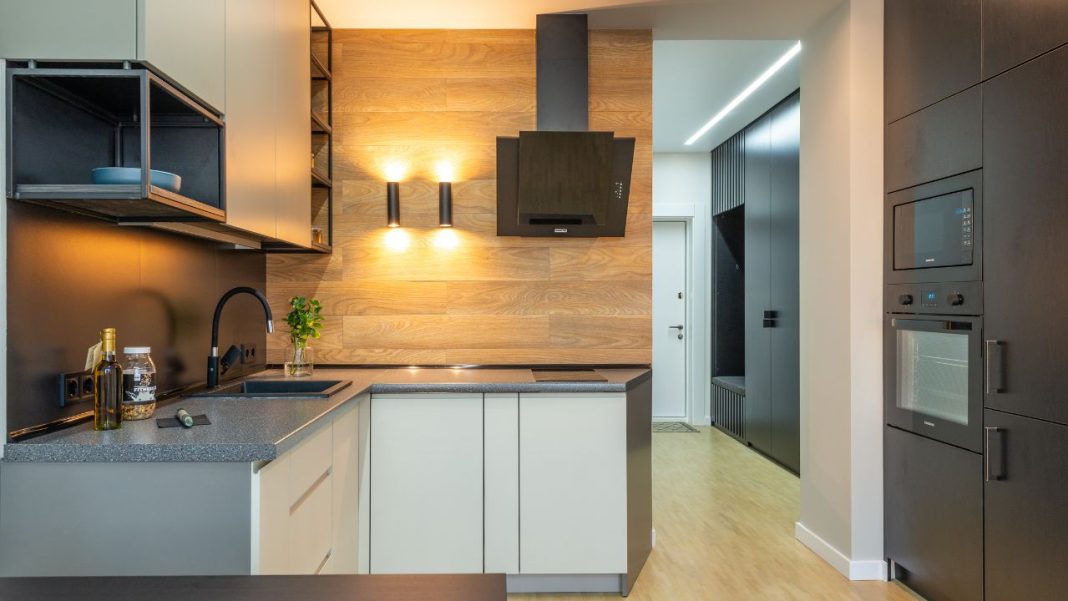How best to organise the kitchen? This question has probably crossed the minds of many. It might be an exaggeration, but I’d like to share with you my 10 tips for the perfect kitchen organisation. As we all know, the kitchen is often the heart of every home. It’s where we spend a significant portion of our day. A well-organised kitchen can simplify your daily life and reduce stress. Especially as a mum of three young children and as a self-employed food photographer, without a well-organised kitchen, I’d be lost in daily chaos. Essentially, a well-organised kitchen reduces the time needed to prepare daily meals. Speedier cooking comes from clearing the workspace. So, the very first tip: the workspace is for working, not for clutter. Sounds straightforward, but in practice, it’s not always easy.
“Order is half the battle.”
Who doesn’t know the saying, “Order is half the battle”? We often heard it from our parents, typically when they wanted us to tidy our rooms. Even though this maxim is old, it’s still relevant today. Sticking to it can benefit us both professionally and personally.
Step by Step to an Organised Kitchen To begin, it’s crucial to understand what’s inside your kitchen cabinets. The first step is always the same: Take stock. Empty out cabinets, drawers, and shelves and see precisely what you’ve stored in your kitchen. Be prepared; you’ll need plenty of space for this. It’s wise to clear not only the kitchen table but also other surfaces like the kitchen counters.
Don’t be surprised if, at the end of this inventory, many items are spread out before you, including some you forgot you had. The next step is to check if all the items still work and if any stored foods are still edible. Anything that’s broken or expired should be discarded. Then, sort your kitchen tools. Categorise them, e.g., baking tools, cutting boards, pots, and pans, and store them in cabinets and drawers to keep your workspace clear.
Organising Kitchen Cabinets Simply and Efficiently To have everything easily accessible and to store other household items smartly in drawers and cabinets, there are so-called organisational aids or kitchen helpers. These little aids save space and help keep the kitchen tidy. Various kitchen suppliers and furniture shops have addressed the “kitchen organisation” issue, offering functional and stylish drawer inserts, pull-out trays, or flexible storage systems.
Here are 10 tips and some suggestions for you:
- Cupboard organisers and drawer dividers for all sizes and depths.
- Spice carousels or rotating trays for spices and oils.
- Cookware organisers.
- Pan racks and lid holders.
- Extendable drawer inserts.
- Rotating pull-outs for corner cabinets.
- Plate racks or stands for various plate sizes.
- Wall-mounted hook strips beneath upper cabinets.
- Large vase or decorative container for cooking utensils.
- Magnetic strips for knives.
Keeping Work Surfaces Clear and Organising the Sink Area Cooking should be enjoyable. To achieve this, the focus should be more on the cooking itself rather than rummaging around searching for items that constantly obstruct you. It’s time-consuming and nerve-wracking. A tidy and clean workspace makes food preparation easier and is thus essential for an organised kitchen. After all, who wants to start by clearing space when the cooking should already be underway?
Initially, identify what clutters the workspace. Common culprits include kitchen towels or washing-up items, recipes, used coffee cups, or empty glass bottles. Brands offer versatile organisational aids, ranging from sink caddies that organise sponges and washing-up liquids around the tap, to handy storage solutions for phones or recipe books, to stainless steel racks for freshly washed bottles. These aids facilitate cooking, baking, serving, and washing-up. Following the principle that “everything has its place”, the chaos around the sink and on the workspace should soon be a thing of the past. The perfect tip to conclude: Get rid of sentimentality and be practical. Anything you haven’t used in the past year should leave the kitchen. Simple as that! sensor kitchen bin
Tips for Organising Closed Cabinets
- Group similar items: Arrange items in groups, such as pots, pans, containers, or bowls. This helps maintain order and makes it easier to find things when needed.
- Use stackable containers: Stackable containers or baskets can help save space and reduce clutter. Use them to group similar items and make them more accessible.
- Use shelf inserts: Shelf inserts can help maximise storage in your cabinets. They’re great for storing plates, cups, or chopping boards.
- Use door hooks: Door hooks can be an excellent way to create additional storage in your cabinets. They’re ideal for hanging kitchen utensils, cloths, or aprons.
- Opt for clear storage containers: Transparent containers let you quickly see their contents, saving you time when searching for specific items.

